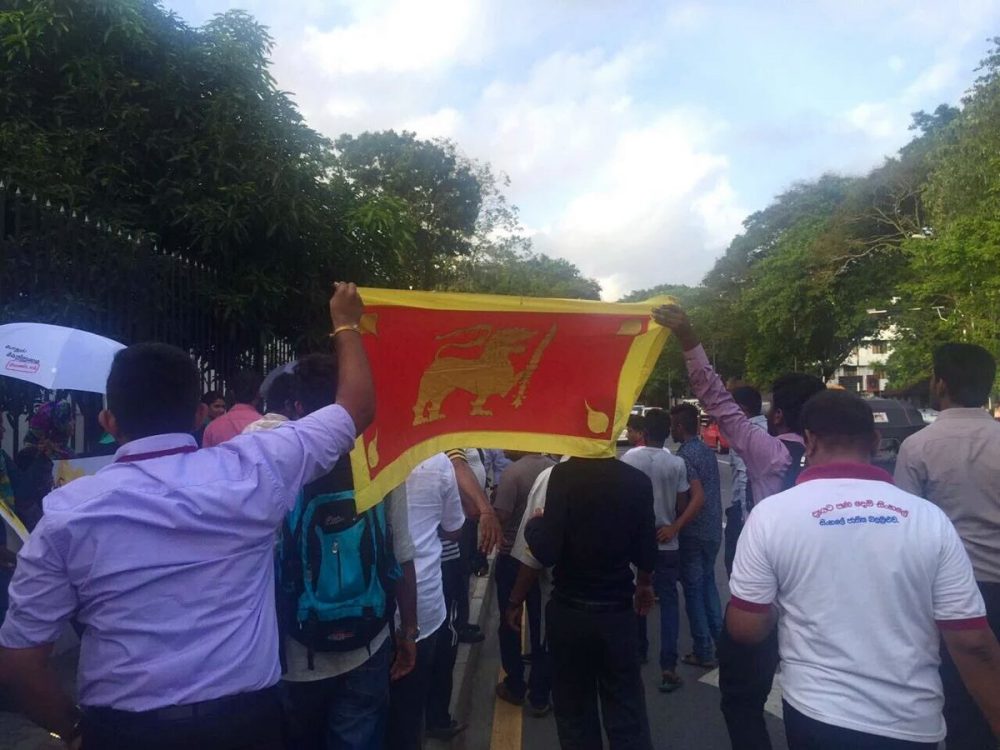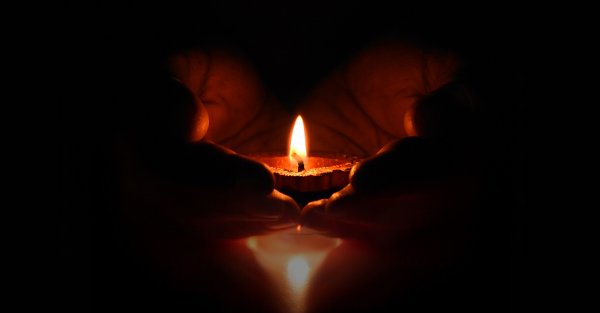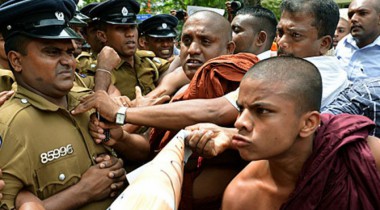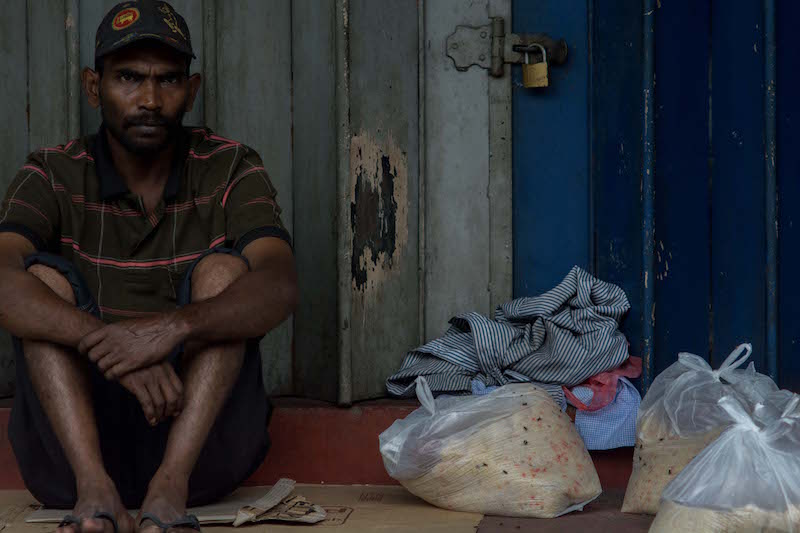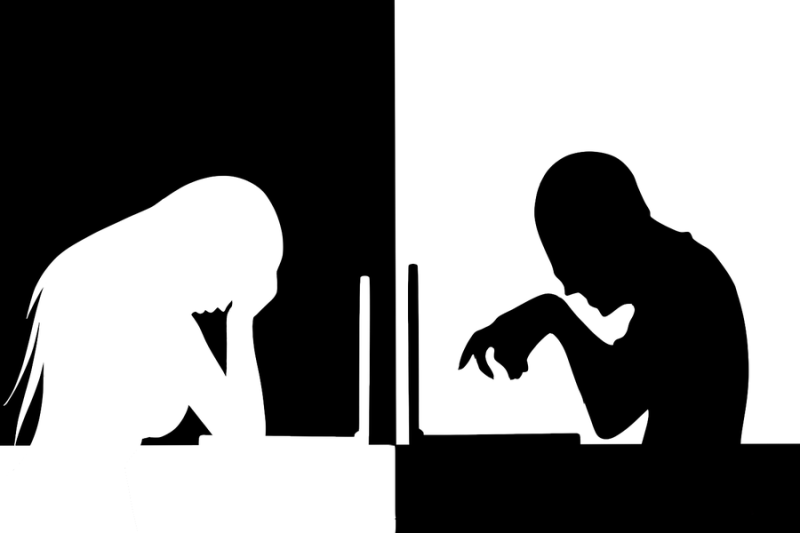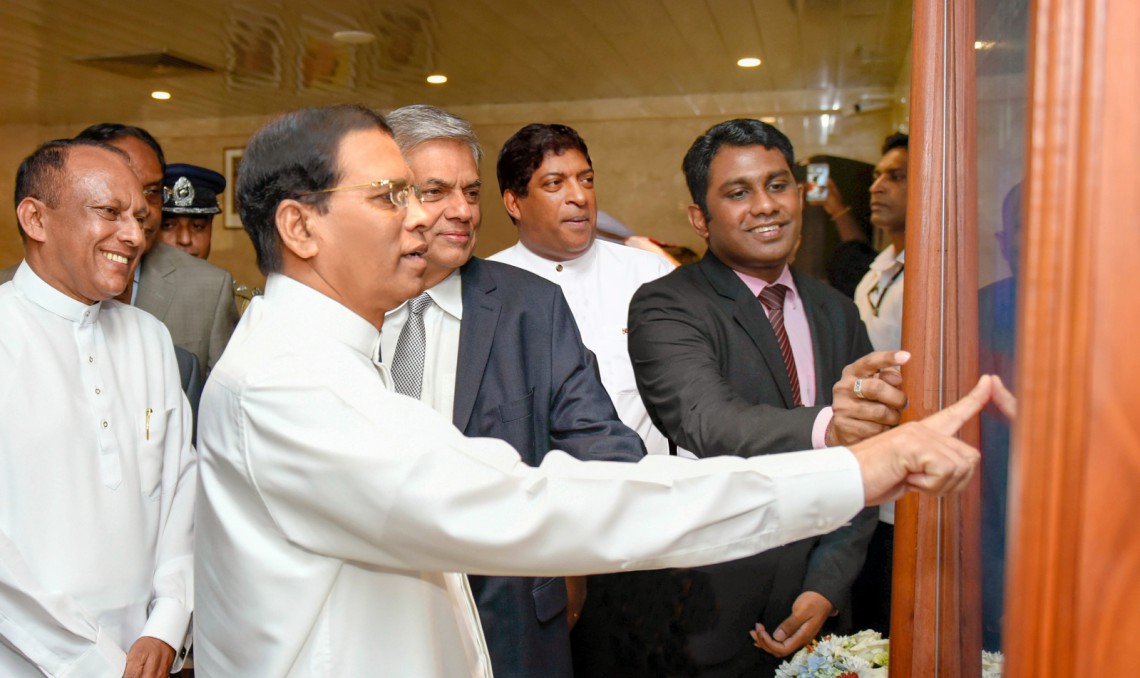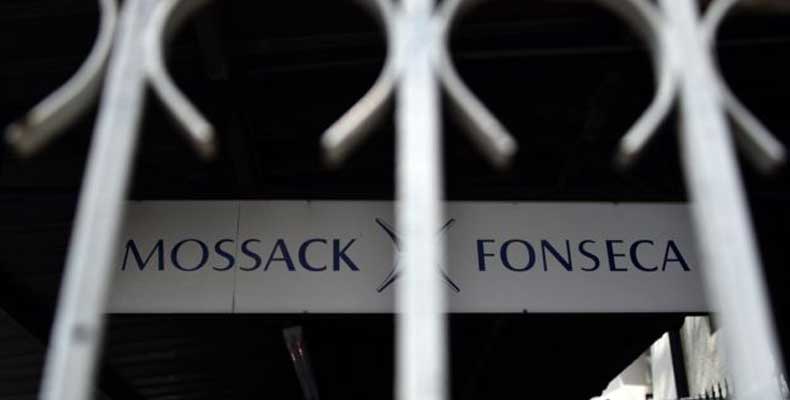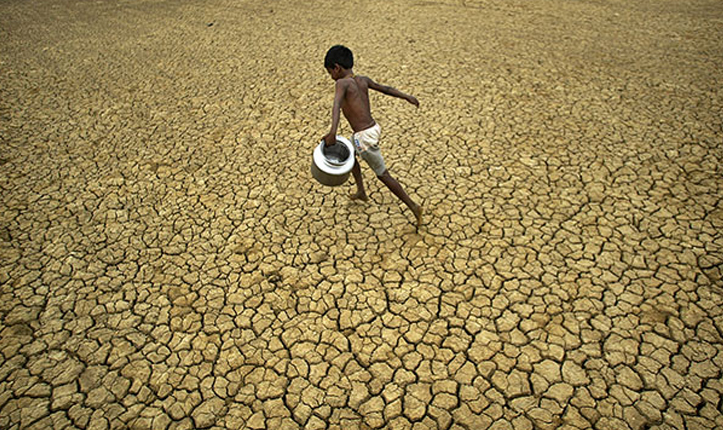
Sinha-Le: A symbol that means different things to different people. To some, it’s a badge of ethno-religious pride in the face of growing anti-national forces; to others, an oppressive reminder of their place in society that could potentially spark the flames of another bloody conflict. Still others dismissively call it a meme, a harmless bumper sticker that doesn’t really mean anything in the grand scheme of things, blown way out of proportion by social media do-gooders. The truth, as is often the case with such things, probably lies somewhere in between.
At its onset, Sinha-Le, which literally means ‘Lion’s Blood’, really was nothing more than a bumper sticker or Facebook profile picture designed to assert one’s ethnic identity. It didn’t become a mass movement until quite recently, when politically motivated individuals and organisations decided to cash in on its ever increasing popularity among the majority Sinhala Buddhist community – particularly its impressionable youth – in an attempt to legitimise themselves in the eyes of the [voting] public.
In a matter of weeks, Sinha-Le went from being a relatively harmless voluntary racial-profiling drive to a demonstrably dangerous campaign of anti-minority hysteria that has culminated in racially motivated vandalism and demonstrations that serve as a chilling reminder of just how fragile race relations can get in this country.
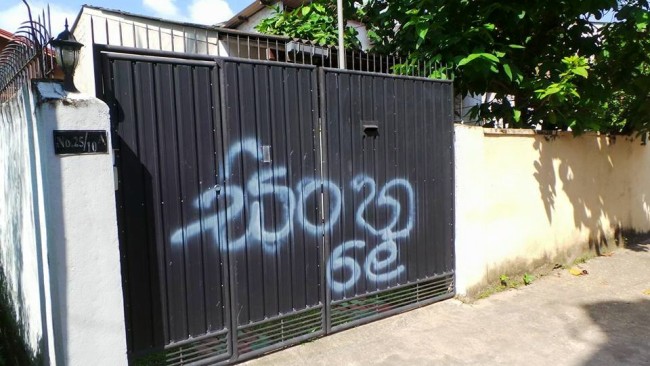
This is when the ‘trend’ got really problematic. Image Credit: chatter.lk
Some point out that the word Sinhale is simply a corruption of the ancient name for the island Siv-Hela, or the four Helas, and therefore does not have racist connotations. In fact, these silent supporters argue, all ethnicities inhabiting Sri Lanka are Sinhalese in character and, so, instead of fighting the trend, they should just embrace it. This would be a lot easier to swallow if the word Sinha-Le, as it is used in the now infamous sticker, wasn’t stylised as two separate words, with the ‘Le’ often coloured in blood red, betraying an agenda that is far less noble than its stated goal of unifying all communities.
But these eternal optimists do have a point. Nobody likes to be labeled a racist, and there is nothing inherently wrong with taking pride in one’s heritage. Instead of needlessly antagonising these people – the moderates, not the crazies – wouldn’t a better, more productive approach be to engage them? To try and explain to them that their words and actions can hurt the very nation that they love so dearly?
Then there is the question of free speech. If somebody wants to paste a sticker on their car window or wear a t-shirt with a racist-sounding slogan, no matter how offensive or objectionable, isn’t it within his or her rights to do so? By calling for a ban on a word, are we not threatening to dismantle the very foundations our modern democracies are built on? Racism must be taken on, no question; but it shouldn’t be at the cost of stifling basic human freedoms.
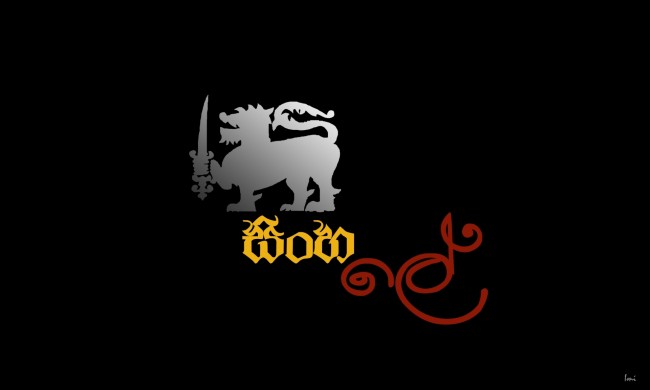
Sinha-Le: To ban or not? Image Credit: www.picture.lk
That said, this is no longer an issue we can afford to ignore. The sooner it is addressed the better. Needless to say, it is futile to wait for the Government to do something about it. President Maithripala Sirisena recently went on record stating that the Sinha-Le issue was not something worth talking about. Arguably a fair point, considering that it could give the as-yet largely fringe movement an unnecessary and avoidable legitimacy; but it is clear that something needs to be done and done fast. The Government needs to realise that this has the potential to blow up into something far bigger and costlier than losing a few votes at the next election. Pretending it’s not there and hoping it’ll go away may not be the wisest course of action.
The minorities, for their part, have an important role to play as well. Many of the Sinhalese Buddhists riding this current populist anti-minority wave are a misguided but otherwise peace-loving lot who, for reasons that are both legitimate and imagined, are feeling increasingly insecure of their place as the majority community and threatened by what they perceive to be an exponential growth of minority populations. Taking this into account, there is a lot the more pragmatic members of these communities can do to reverse the Sinha-Le trend, by helping build bridges between communities and convincing the less rabid of the ultra nationalist groups that they’re not the enemy of the Sinhalese people. Fighting and exposing the extremist elements that exist within their own communities can also go a long way in building trust and mutual respect.
Ultimately, it is up to all right-thinking Sri Lankans, the true patriots of this [potentially] great country who see the value in every citizen, no matter what language they speak or what religion they adhere to, to ensure that the next generation of Sri Lankans don’t inherit another destructive war that could set the country back by several decades. We have seen a lot of progress in the relatively short period of time that has passed since the end of the last war, and it would be a crying shame if another pointless conflict got in the way of the true greatness this country is bound to achieve, provided it doesn’t fall victim to its own prejudices. There is no better time than right now to start working towards that end.

